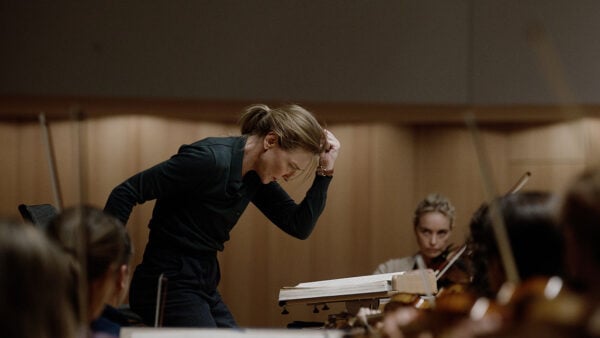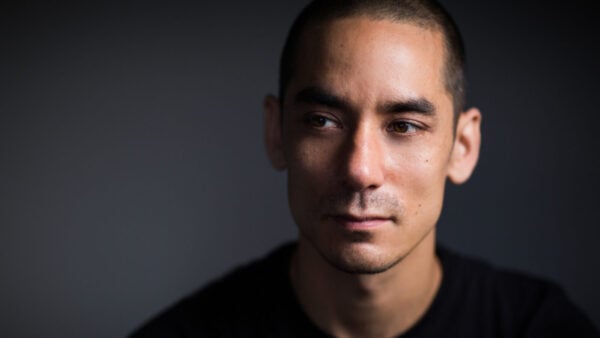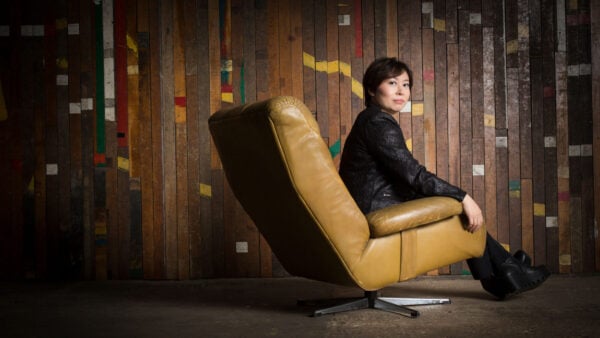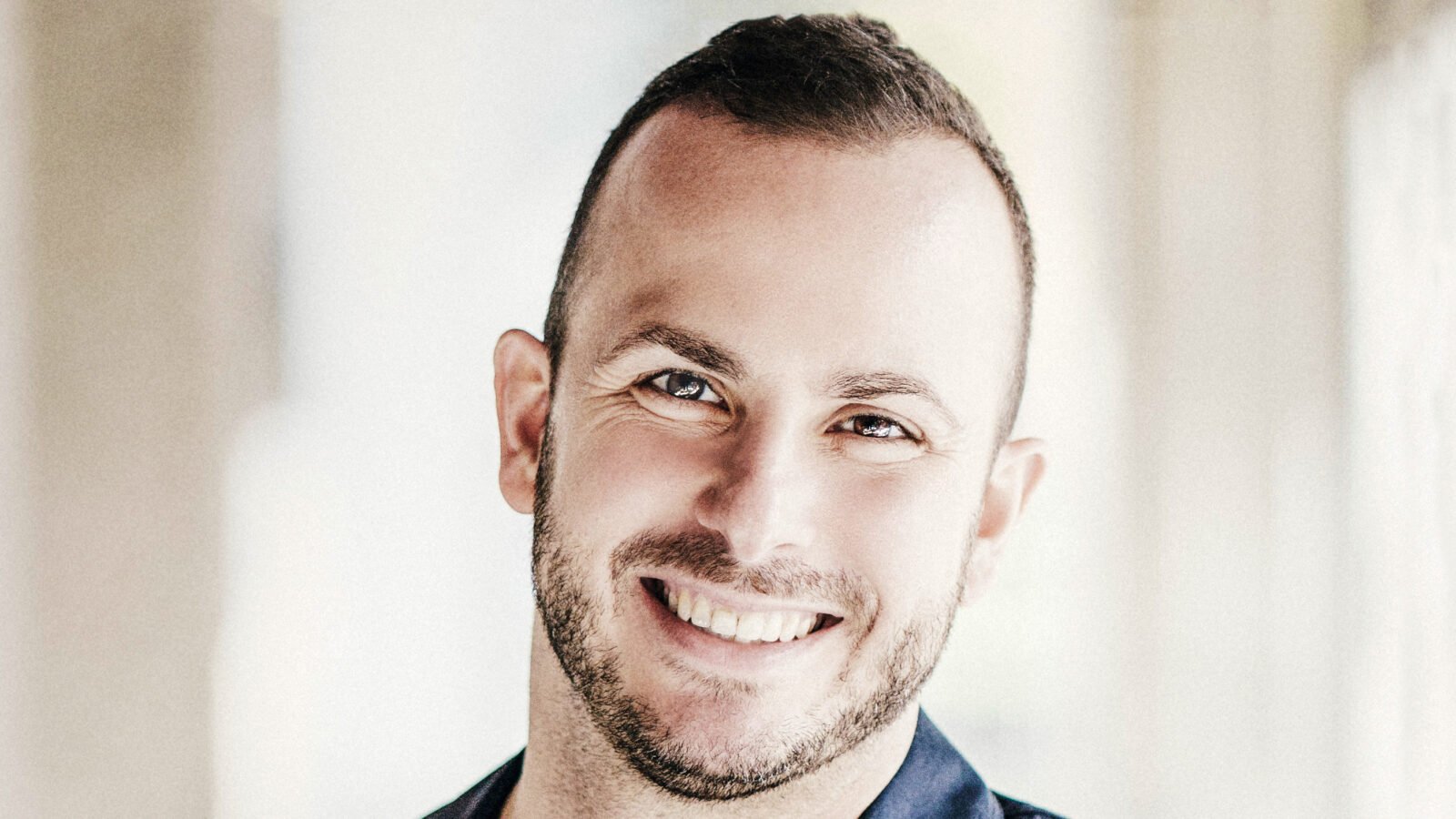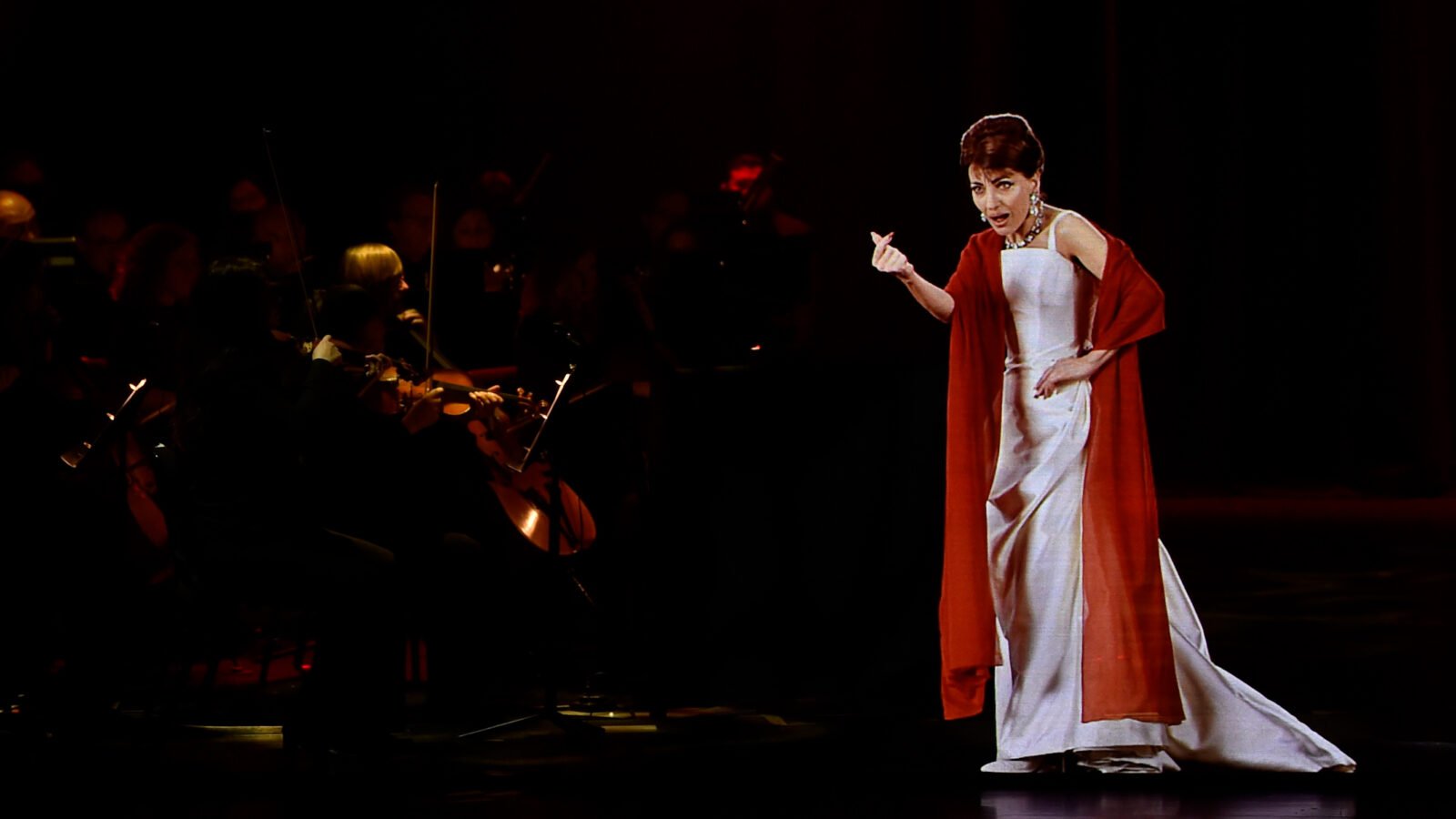
A hologram Maria Callas performs with a living orchestra (Photo: BASE Hologram)
With a laugh, Irish conductor and composer Eímear Noone describes herself: “My background is very traditional classical, and my love of all things shiny and new and technological brought me to this world where the orchestra meets technology.”
She’s composed for film, TV, and video games. She even hosts a program on Classic FM about video game music, which she sees as a promising way to introduce new audiences to orchestral music.
With this CV, she seems like a logical candidate to conduct a cutting-edge orchestral recital featuring a hologram. Audiences have marveled at holo-performers in the past (this video of hologram late rapper Tupac and real-life Snoop Dogg performing at Coachella boasts over 50 million views on YouTube), but Noone is quick to point out that this is the first such undertaking for classical music. And who better to start with than iconic soprano Maria Callas?
With the show’s presenter BASE Hologram, director Stephen Wadsworth, and a passionate team, Noone has helped guide the Callas hologram tour from initial tests to the stage. Ahead of the hologram performance at Lyric Opera House this weekend, WFMT spoke with Noone about the challenges and rewards of bringing “La Divina” back to life in hologram form.
WFMT: How did you get involved with this project?
Eímear Noone: When BASE Hologram was looking for somebody who could figure out how to synchronize the live orchestra with the hologram, they came to me and to my husband, composer Craig Stuart Garfinkle. What I found exciting about this project is when I came on board, I didn’t actually know if it was technically possible or not. It was such a challenge in terms of the technical difficulties that the orchestra musicians and I would have to surmount in order to create something magical for the audience.
I had some concerns initially. With something like this, I knew it would be slightly controversial because it’s such a new medium. I wanted to know that her life story and her contribution to music was being handled in a way that I felt was conducive to the level of art that this woman gave to the world. So I called Stephen Wadsworth, who is one of the heads of the Opera Department of Juilliard. I could tell this was somebody who genuinely cared about Callas, and cared about her art, and cared about how she was represented. I really liked him, and I really liked the producers from BASE Hologram.
They have some amazing people on board, in terms of sound, in terms of extracting her voice from original recordings. The hologram is incredibly moving and incredibly tastefully done — the way she’s portrayed, it is beautiful. She’s at her best.
WFMT: How familiar were you with Maria Callas before signing on to this project?
Noone: How could any student of classical music not know Callas!? Her voice is so distinctive and identifiable. As a classical musician, I appreciate the popularization today of an artist who my age group never got to see live, let alone today’s teens and younger people.
You’re reminded in every moment how much she gave of herself to the art form. People assume that it’s going to be the greatest hits or the showstoppers or whatever, and it really isn’t. It features some major scenes of operas that aren’t terribly well-known alongside Carmen and Norma. There are certain operas that she brought back from the dead. There is the resurrection right there! Bellini’s Norma was almost lost to time until she inhabited the role.
I’ve gotten to know her really, really, really well the last couple of years. Her voice in particular because my husband and I had to design every single moment of the synchronization system. We have listened to every single note of every single piece a thousand times.
WFMT: What challenges arose during the process of creating this performance?
Noone: This is an artist who was known by conductors for being incredibly difficult to accompany because of the way she would inhabit a role. She was sort of the first operatic method actor! Plus, bear in mind, all of these recordings across her career were made in different rooms and different situations. Sometimes the orchestras weren’t even tuned the same.
WFMT: What was your first reaction to the hologram?
Noone: The first time I saw the hologram in rehearsals, I just gasped. It is beautiful. There are several moments in the piece where I feel myself getting teary-eyed, and I have seen the show a bunch of times.
One of the things I love about this project is that you can hear her voice change across the show because they are her original vocal recordings. I don’t just mean in terms of age, I mean in terms of the role. Famously Carmen — she inhabited that role in a way that often put her voice on the edge.
WFMT: How have orchestras responded to the hologram?
Noone: I think that’s important to note because this is the only time this has ever been done with a classical artist. It’s very difficult on the orchestras. On the first rehearsal, they always think we’re nuts. And after the second rehearsal, they go, “OK, this might just work!” By the time we get to the stage, everybody’s saying, “This is great.”
It has to be synchronized absolutely perfectly because the hologram and I can’t make eye contact and let each other know we’re about to start; I can’t do any of those things that you would do with a singer who is right there next to you. We have to meet her in exactly the right millisecond. It’s a real tightrope walk. When we do it right, the audience thinks, “Wow, that was magic!”
WFMT: How have audiences responded to the hologram performances?
Noone: You definitely get purists who show up and just want to hate it. At some point, you just say, “You know what everyone? It’s just a show. Sit down, enjoy this woman’s beautiful contribution to music, and just chill out!” If you’re offended by seeing a hologram portrayal, then surely you’re offended by seeing someone portrayed on screen. People were offended when they heard voices on the gramophone of people who had passed away. It’s a new medium, but I think it’s just another tool for a director.
What I love is when she walks out on stage and the audience gasps. That for me is incredibly moving. We get to celebrate her legacy in the concert hall in this way. You can see that it’s an homage, that it’s been done with love.
With conductor Eímear Noone and members of the Lyric Opera Orchestra, Maria Callas takes the stage at Lyric Opera House on Saturday, September 7 at 7:30 pm. For ticketing and information, visit lyricopera.org.
This interview has been lightly edited for length and clarity.

